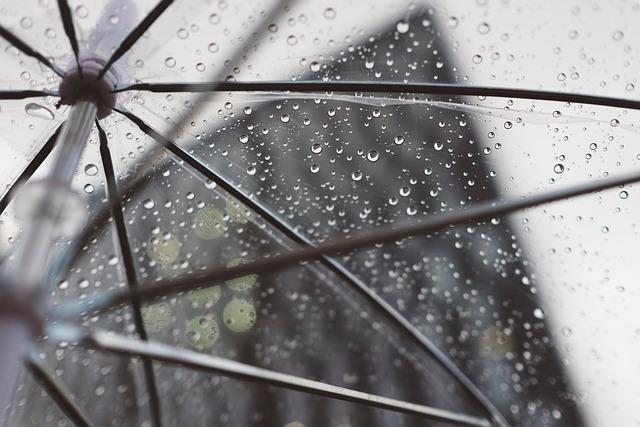In cities where concrete stretches as far as the eye can see, the humble garden becomes a silent guardian of the environment. Community green gardens transform vacant lots into living laboratories for sustainability, providing fresh produce, habitat, and, crucially, a shield against the stresses of climate change. By integrating native plants, rain gardens, and composting systems, these urban oases play a pivotal role in urban water protection, ensuring that rainwater is absorbed, filtered, and returned to the earth rather than being lost in a storm drain.
The Science of Urban Water Protection
Urban water protection refers to the strategies that safeguard the quantity and quality of water within a city. Impervious surfaces—roads, rooftops, and parking lots—prevent natural infiltration, causing runoff that carries pollutants into waterways. Green gardens counter this by creating permeable layers that capture rainwater, allowing it to seep into the soil, recharge aquifers, and filter contaminants. The combination of mulch, deep-rooted plants, and biochar in compost piles creates a natural filtration system that removes heavy metals, excess nutrients, and organic debris.
- Soil acts as a sponge, soaking up rainfall.
- Plant roots trap sediments and absorb excess nutrients.
- Microbial communities break down organic pollutants.
Choosing the Right Plants
Selection of plant species is key to maximizing water retention. Native shrubs and grasses are well adapted to local climate and soil, requiring less irrigation once established. Perennial groundcovers, such as clover or creeping thyme, provide year-round coverage that reduces evaporation. Deep-rooted trees, like maples or oaks, tap into groundwater and store it for later use, while their canopy intercepts rainfall, allowing more water to reach the soil beneath.
“The right plant choices make a garden a living reservoir,” says local ecologist Maya Torres.
Designing for Resilience
Effective community gardens incorporate features that adapt to variable weather patterns. Rain barrels and cisterns collect runoff for later use in irrigation, lowering demand on municipal water supplies. Swales—shallow trenches lined with vegetation—slow the flow of water, encouraging infiltration and reducing erosion. These elements work together to create a resilient ecosystem that can endure heavy storms, droughts, and the unpredictable impacts of climate change.
Soil Health and Composting
Healthy soil is the cornerstone of urban water protection. Composting kitchen scraps and yard waste not only reduces landfill waste but also enriches soil with organic matter. This organic layer improves water retention, reduces runoff, and supports a diverse community of microbes that break down pollutants. Compost also acts as a natural fertilizer, decreasing the need for chemical inputs that can leach into waterways.
- Collect organic waste in a bin.
- Turn the pile regularly to aerate.
- Use finished compost to amend garden beds.
Community Engagement and Education
Beyond physical infrastructure, community gardens are social hubs that foster environmental stewardship. Workshops on rainwater harvesting, native planting, and composting teach residents practical skills that they can apply at home. These shared learning experiences build a sense of ownership and responsibility, turning abstract concepts like urban water protection into tangible actions.
Volunteer Coordination
Successful gardens rely on a network of volunteers who handle planting, weeding, and maintenance. Rotating responsibilities ensures that knowledge is spread across participants, creating a resilient workforce. Regular meetings also provide a forum for discussing challenges—such as pest management or irrigation failures—and brainstorming collaborative solutions.
Case Study: The Willowbrook Urban Oasis
In the Willowbrook neighborhood, a derelict parking lot was transformed into a thriving garden that now serves over 200 residents. The project incorporated a rain garden with a 3-foot-deep soil layer, native trees, and a community compost bin. Since its opening, local runoff has decreased by 40%, and residents report a noticeable improvement in air quality and neighborhood aesthetics.
Key Takeaways
The Willowbrook example highlights several lessons for other communities:
- Start with a clear water‑management plan.
- Use native plants to reduce irrigation needs.
- Involve residents from the outset to build commitment.
- Monitor outcomes and adjust designs as necessary.
Policy and Funding Opportunities
Municipal governments can support community gardens by offering incentives such as tax credits, low‑interest loans, or grants for green infrastructure projects. Policies that encourage the use of permeable pavements, rain barrels, and green roofs create a broader framework within which community gardens can thrive. Collaborative partnerships between city agencies and local nonprofits often unlock additional resources, including technical expertise and volunteer networks.
Grant Writing Basics
Successful grant proposals clearly articulate the garden’s impact on urban water protection, citing measurable goals like reduced runoff volume, increased groundwater recharge, or decreased nutrient loading. Including community demographics and volunteer hours demonstrates social value. A concise budget that outlines material costs, labor, and maintenance ensures transparency and builds trust with funders.
Future Directions
As cities grow, the need for innovative water‑management solutions becomes ever more pressing. Community green gardens are scalable models that can be replicated across neighborhoods, forming a network of resilient, self‑sustaining ecosystems. Emerging technologies—such as smart irrigation controllers and bioengineered plant varieties—offer additional tools to enhance water efficiency. By staying rooted in local engagement and ecological principles, urban water protection can continue to evolve, safeguarding both people and nature.
Call to Action
Whether you are a homeowner, a city planner, or a curious citizen, there are ways to contribute. Join a local garden group, start a container garden on your balcony, or advocate for green infrastructure in your community. Every effort, no matter how small, adds up to a larger movement that protects our water, our neighborhoods, and our planet.



